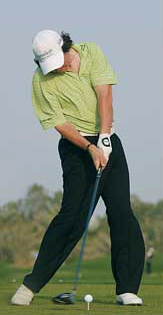Camillo Villegas was disqualified last week for signing an incorrect scorecard. He broke Rule 23-1 and did not know he had. He signed his card without the penalty, and when TV viewers spotting the infraction called in, rules officials determined the viewers were correct and disqualified him. His comment as, “There are a million rules, and no one can know them all.”
The debate crops up once more: should TV viewers be able to phone in violations, and should players be DQed if the notification happens after they have signed their card?
Unlike other sports, where there are rules officials on the spot covering a small area of the field of play, golf is played over 150 acres with only a handful of rules officials acting where requested.
So we expect the players to be the referees their own game. It is asking too much that we also expect them to know the rules we trust them to enforce? What else could we think? The players, though, don’t know the rules. No one is certain if they even care to.
Rocco Mediate is quoted in the January 14, 2011, Golfweek magazine when asked how well PGA players know the rules, on a scale of 1 to 10. “Maybe a 5 — and that’s being nice,” he said. Bubba Watson, who was in the Villegas group, said, “I probably wouldn’t have known that rule, either.”
The issue that tournament officials want to avoid is having to walk the line between ignorance and dishonesty. Is a player truly ignorant of a rule, or just claiming to be so he or she can get away with something?
The way to avoid walking the line is to not have a line. When a rule is broken, and no penalty is taken at the time, whatever penalty the rules provide must be assigned retroactively if the violation becomes known. The question of cheating never gets asked.
We’re left with the fact that the absence of on-the-spot referees means matches are being supervised by people who know less about the rules than guys I play with on Tuesday morning do. Not only that, but even though I’m not a rules maven, and I didn’t know about Rule 23-1 until this issue came up, I do know that when your ball is moving, all you do until it stops is watch it. Couldn’t we expect a world-class professional to have the same amount of sense?
Of course a violation should be phoned in if it is noticed, and relevant penalties applied. One golfer suffers if it does, but the entire sport suffers if it does not.


